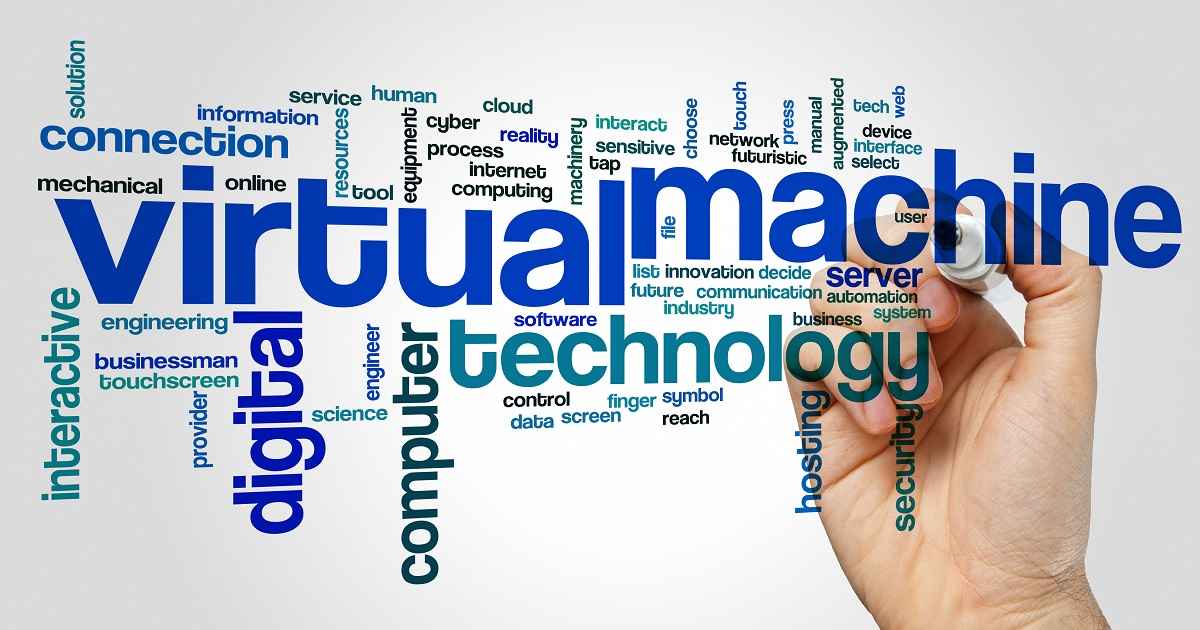
VMware, Vsphere, Hyper-V
Article | May 2, 2023
Researchers have published the details of an investigation into CVE-2020-3952, a major vulnerability in VMware's vCenter that was disclosed and patched on April 9. The flaw was given a CVSS score of 10. CVE-2020-3952 exists in VMware's Directory Service (vmdir), which is a part of VMware vCenter Server, a centralized management platform for virtualized hosts and virtual machines. Through vCenter Server, the company says, an administrator can manage hundreds of workloads. The platform uses single sign-on (SSO), which includes vmdir, Security Token Service, an administration server, and the vCenter Lookup Service. Vmdir is also used for certificate management for the workloads vCenter handles.
Read More

Virtual Desktop Strategies
Article | July 26, 2022
Network virtualization (NV) is the act of combining a network's physical hardware into a single virtual network. This is often accomplished by running several virtual guest computers in software containers on a single physical host system.
Network virtualization is the gold standard for networking, and it is being adopted by enterprises of all kinds globally. By integrating their existing network gear into a single virtual network, enterprises can save operating expenses, automate network and security processes, and set the stage for future growth.
Businesses can use virtualization to imitate many types of traditional hardware, including servers, storage devices, and network resources.
Three Forces Driving Network Virtualization
Demand for enterprise networks keeps rising, driven by higher end-user demands and the proliferation of devices and business software. Through network virtualization, IT businesses are gaining the ability to respond to evolving needs and match their networking capabilities with their virtualized storage and computing resources.
According to a recent SDxCentral survey, 88% of respondents believe that adopting a network virtualization solution is "mission critical" and that it is necessary to assist IT in addressing the immediate requirements of flexibility, scalability, and cost savings (both OpEx and CapEx) in the data center.
Speed
Today, consider any business as an example. Everything depends on IT's capacity to assist business operations. When a company wants to 'surprise' its clients with a new app, launch a competitive offer, or pursue a fresh route to market, it requires immediate IT assistance. That implies IT must move considerably more swiftly, and networks must evolve at the rapid speed of a digitally enabled organization.
Security
According to a PricewaterhouseCoopers survey, the average organization experiences two successful cyberattacks every week. Perimeter security is just insufficient to stem the flood, and network experts are called upon to provide a better solution.
The new data center security approach will:
Be software-based
Use the micro-segmentation principle
Adopt a Zero Trust (ZT) paradigm
In an ideal world, there would be no difference between trustworthy and untrusted networks or sectors, but a ZT model necessitates a network virtualization technology that allows micro-segmentation.
Flexibility
Thanks to the emergence of server virtualization, applications are no longer linked to a specific physical server in a single location. Applications can now be replicated to eliminate a data center for disaster recovery, moved through one corporate data center to another, or slipped into a hybrid cloud environment.
The problem is that network setup is hardware-dependent, and hardwired networking connections restrict them. Because networking services vary significantly from one data center to the next, as an in-house data center differs from a cloud, you must perform extensive personalization to make your applications work in different network environments—a significant barrier to app mobility and another compelling reason to utilize network virtualization.
Closing Lines
Network virtualization is indeed the future technology. These network virtualization platform characteristics benefit more companies as CIOs get more involved in organizational processes. As consumer demand for real-time solutions develops, businesses will be forced to explore network virtualization as the best way to take their networks to another level.
Read More

Virtual Desktop Tools, Virtual Desktop Strategies
Article | June 8, 2023
Contents
1. Introduction
2. What is Orchestration?
3. How Orchestrating Help Optimize VMs Efficiency?
3.1. Resource Optimization
3.2 Dynamic Scaling
3.3 Faster Deployment
3.4 Improved Security
3.5 Multi-Cloud Management
3.6 Improved Collaboration
4. Considerations while Orchestrating VMs
4.1. Together Hosting of Containers and VMs
4.2 Automated Backup and Restore for VMs
4.3 Ensure Replication for VMs
4.4 Setup Data Synchronization for VMs
5. Conclusion
1. Introduction
Orchestration is a superset of automation. Cloud orchestration goes beyond automation, providing coordination between multiple automated activities. Cloud orchestration is increasingly essential due to the growth of containerization, which facilitates scaling applications across clouds, both public and private.
The demand for both public cloud orchestration and hybrid cloud orchestration has increased as businesses increasingly adopt a hybrid cloud architecture. The quick adoption of containerized, micro-services-based apps that communicate over APIs has fueled the desire for automation in deploying and managing applications across the cloud. This increase in complexity has created a need for VM orchestration that can manage numerous dependencies across various clouds with policy-driven security and management capabilities.
2. What is Orchestration?
Orchestration refers to the process of automating, coordinating, and managing complex systems, workflows, or processes. It typically entails the use of automation tools and platforms to streamline and coordinate the deployment, configuration, management of applications and services across different environments. This includes development, testing, staging, and production.
Orchestration tools in cloud computing can be used to automate the deployment and administration of containerized applications across multiple servers or clusters. These tools can help automate tasks such as container provisioning, scaling, load balancing, and health monitoring, making it easier to manage complex application environments. Orchestration ensures organizations automate and streamline their workflows, reduce errors and downtime, and improve the efficacy and scalability of their operations.
3. How Orchestrating Help Optimize VMs Efficiency?
Orchestration offers enhanced visibility into the resources and processes in use, which helps prevent VM sprawl and helps organizations trace resource usage by department, business unit, or individual user.
Fig. Global Market for VNFO by Virtualization Methodology 2022-27($ million)
(Source: Insight Research)
The above figure shows, VMs have established a solid legacy that will continue to be relevant in the near to mid-term future.
These are 6 ways, in which Orchestration helps vin efficient management of VMs:
3.1. Resource Optimization
Orchestrating helps optimize resource utilization by automating the provisioning and de-provisioning of VMs, which allows for efficient use of computing resources. By using orchestration tools, IT teams can set up rules and policies for automatically scaling VMs based on criteria such as CPU utilization, memory usage, network traffic, and application performance metrics. Orchestration also enables advanced techniques such as predictive analytics, machine learning, and artificial intelligence to optimize resource utilization. These technologies can analyze historical data and identify patterns in workload demand, allowing the orchestration system to predict future resource needs and automatically provision or de-provision resources accordingly
3.2. Dynamic Scaling
Orchestrating helps automate scaling of VMs, enabling organizations to quickly and easily adjust their computing resources based on demand. It enables IT teams to configure scaling policies and regulations for virtual machines based on resource utilization and network traffic along with performance metrics. When the workload demand exceeds a certain threshold, the orchestration system can autonomously provision additional virtual machines to accommodate the increased load. When workload demand decreases, the orchestration system can deprovision VMs to free up resources and reduce costs.
3.3. Faster Deployment
Orchestrating can help automate VM deployment of VMs, reducing the time and effort required to provision new resources. By leveraging advanced technologies such as automation, scripting, and APIs, orchestration can further streamline the VM deployment process. It allows IT teams to define workflows and processes that can be automated using scripts, reducing the time and effort required to deploy new resources. In addition, orchestration can integrate with other IT management tools and platforms, such as cloud management platforms, configuration management tools, and monitoring systems. This enables IT teams to leverage various capabilities and services to streamline the VM deployment and improve efficiency.
3.4. Improved Security
Orchestrating can help enhance the security of VMs by automating the deployment of security patches and updates. It also helps ensure VMs are deployed with the appropriate security configurations and settings, reducing the risk of misconfiguration and vulnerability. It enables IT teams to define standard security templates and configurations for VMs, which can be automatically applied during deployment. Furthermore, orchestration can integrate with other security tools and platforms, such as intrusion detection systems and firewalls, to provide a comprehensive security solution. It allows IT teams to automate the deployment of security policies and rules, ensuring that workloads remain protected against various security threats.
3.5. Multi-Cloud Management
Orchestration helps provide a single pane of glass for VM management, enabling IT teams to monitor and manage VMs across multiple cloud environments from a single platform. This simplifies management and reduces complexity, enabling IT teams to respond more quickly and effectively to changing business requirements. In addition, orchestration also helps to ensure consistency and compliance across multiple cloud environments. Moreover, orchestration can also integrate with other multi-cloud management tools and platforms, such as cloud brokers and cloud management platforms, to provide a comprehensive solution for managing VMs across multiple clouds.
3.6. Improved Collaboration
Orchestration helps streamline collaboration by providing a centralized repository for storing and sharing information related to VMs. Moreover, it also automates many of the routine tasks associated with VM management, reducing the workload for IT teams and freeing up time for more complex tasks. This can improve collaboration by enabling IT teams to focus on more strategic initiatives. In addition, orchestration provides advanced analytics and reporting capabilities, enabling IT teams to track performance, identify bottlenecks, and optimize resource utilization. This improves performance by providing a data-driven approach to VM management and allowing IT teams to work collaboratively to identify and address performance issues.
4. Considerations while Orchestrating VMs
4.1. Together Hosting of Containers and VMs
Containers and virtual machines exist together within a single infrastructure and are managed by the same platform. This allows for hosting various projects using a unified management point and the ability to adapt gradually based on current needs and opportunities. This provides greater flexibility for teams to host and administer applications using cutting-edge technologies and established standards and methods.
Moreover, as there is no need to invest in distinct physical servers for virtual machines (VMs) and containers, this approach can be a great way to maximize infrastructure utilization, resulting in lower TCO and higher ROI. In addition, unified management drastically simplifies processes, requiring fewer human resources and less time.
4.2. Automated Backup and Restore for VMs
--Minimize downtime and reduce risk of data loss
Organizations should set up automated backup and restore processes for virtual machines, ensuring critical data and applications are protected during a disaster. This involves scheduling regular backups of virtual machines to a secondary location or cloud storage and setting up automated restore processes to recover virtual machines during an outage or disaster quickly.
4.3. Ensure Replication for VMs
--Ensure data and applications are available and accessible in the event of a disaster
Organizations should set up replication processes for their VMs, allowing them to be automatically copied to a secondary location or cloud infrastructure. This ensures that critical applications and data are available even during a catastrophic failure at the primary site.
4.4. Setup Data Synchronization for VMs
--Improve overall resilience and availability of the system
VM orchestration tools should be used to set up data synchronization processes between virtual machines, ensuring that data is consistent and up-to-date across multiple locations. This is particularly important in scenarios where data needs to be accessed quickly from various locations, such as in distributed environments.
5. Conclusion
Orchestration provides disaster recovery and business continuity, automatic scalability of distributed systems, and inter-service configuration. Cloud orchestration is becoming significant due to the advent of containerization, which permits scaling applications across clouds, both public and private.
We expect continued growth and innovation in the field of VM orchestration, with new technologies and tools emerging to support more efficient and effective management of virtual machines in distributed environments. In addition, as organizations increasingly rely on cloud-based infrastructures and distributed systems, VM orchestration will continue to play a vital role in enabling businesses to operate smoothly and recover quickly from disruptions.
VM orchestration will remain a critical component of disaster recovery and high availability strategies for years as organizations continue relying on virtualization technologies to power their operations and drive innovation.
Read More

Article | May 26, 2021
System Center Virtual Machine Manager (SCVMM) is a management tool for Microsoft’s Hyper-V virtualization platform. It is part of Microsoft’s System Center product suite, which also includes Configuration Manager and Operations Manager, among other tools. SCVMM provides a single pane of glass for managing your on-premises and cloud-based Hyper-V infrastructures, and it’s a more capable alternative to Windows Server tools built for the same purpose.
Read More